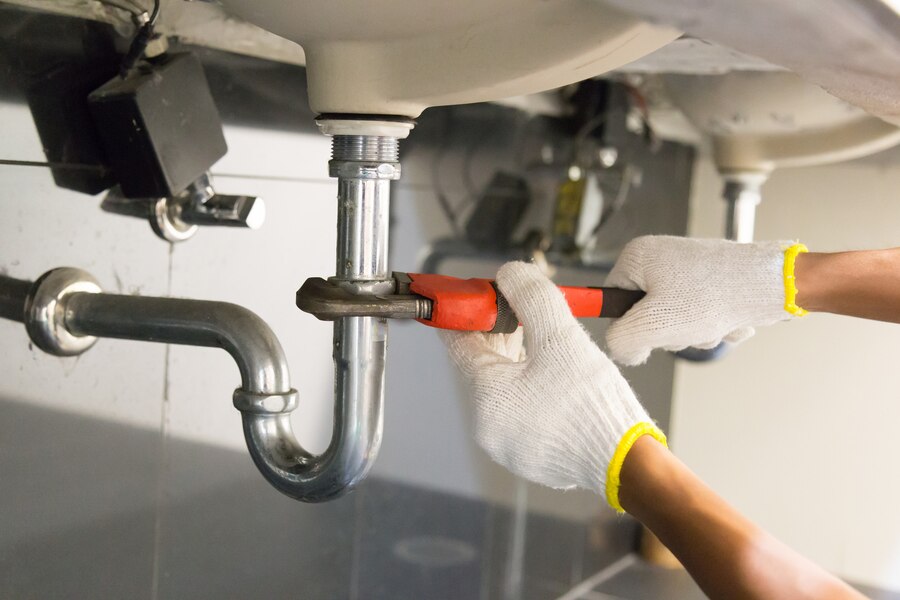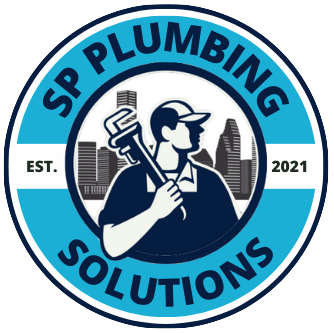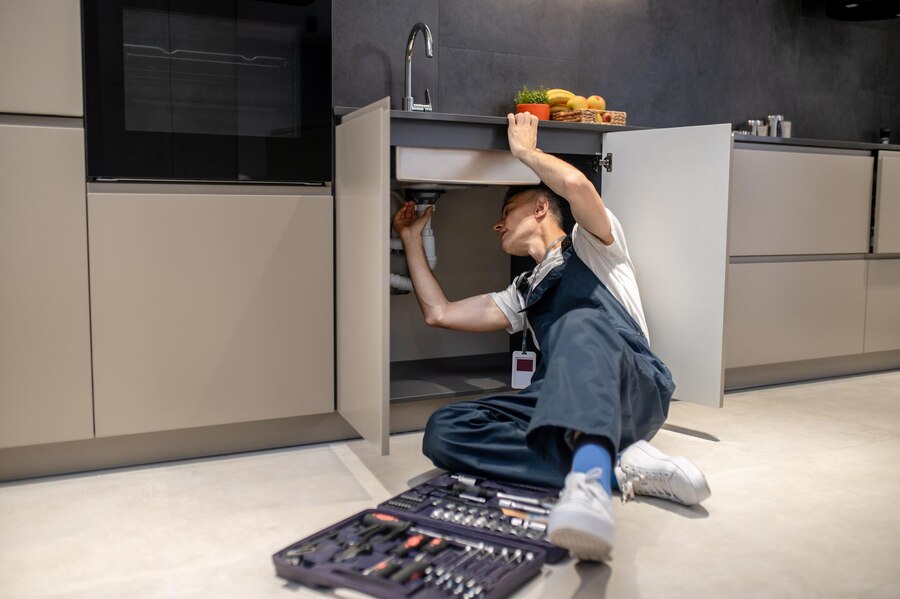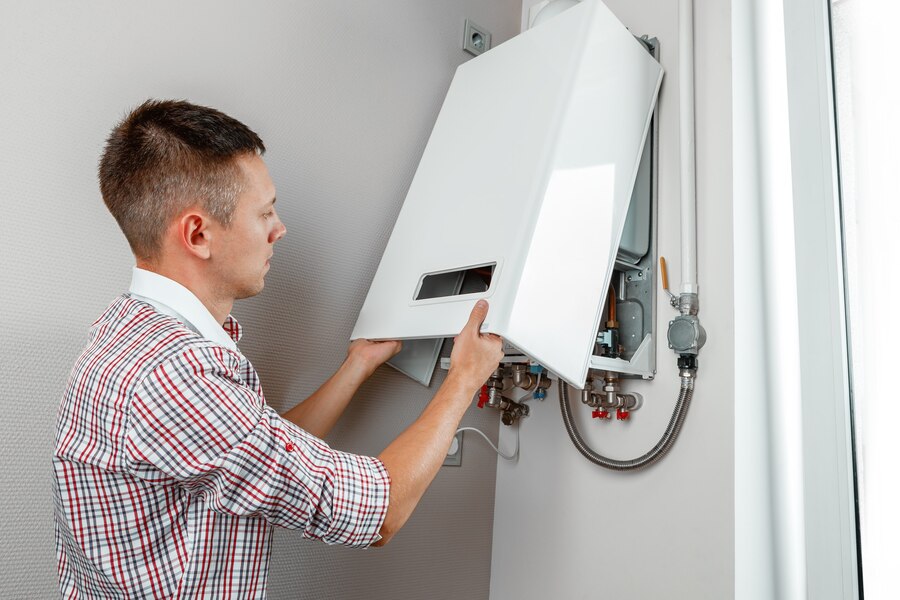
In the intricate infrastructure of your home, plumbing plays a pivotal role, silently serving to provide comfort and convenience. Yet, over time, even the most robust plumbing systems can succumb to wear and tear, leading to leaks, reduced water pressure, and other bothersome issues. But fear not, for there exists a powerful solution: repiping services.
Imagine a home where water flows seamlessly, where leaks are a thing of the past, and where you can trust in the integrity of your plumbing system. That’s the transformative power of repiping services. In this guide, we’ll delve into the reasons why repiping could be the key to revitalizing your home, ensuring its longevity, and ultimately, enhancing your quality of life.
Understanding the Basics of Repiping
Repiping is a comprehensive plumbing procedure aimed at replacing worn-out or deteriorating pipes within a building’s plumbing system. This process involves removing the existing pipes and installing new ones, ensuring improved functionality and longevity.
Typically, repiping is necessary when pipes become corroded, damaged, or outdated, leading to issues like leaks, low water pressure, or rusty water. Understanding the basics of repiping involves knowing the different pipe materials available, such as copper, PEX, or CPVC, and the various factors that influence the choice, including cost, durability, and compatibility with existing plumbing infrastructure. Additionally, it’s essential to grasp the steps involved in the repiping process, from initial assessment and planning to installation and post-repiping testing to ensure optimal performance.
Signs Your Home Needs Repiping
Recognizing the signs that indicate your home requires repiping is crucial for maintaining a functional and efficient plumbing system. Common indicators include frequent leaks or bursts, discolored water, persistent low water pressure, foul odors emanating from drains, and visible signs of corrosion or rust on pipes.
These symptoms often suggest underlying issues with the plumbing infrastructure that can compromise the integrity of your home’s water supply and lead to costly water damage if left unaddressed. Furthermore, older homes with outdated galvanized steel or polybutylene pipes are particularly susceptible to deterioration and may require repiping to ensure safe and reliable water distribution. Regular inspections by qualified plumbers can help identify potential problems early on and prevent more extensive damage, saving homeowners time, money, and stress in the long run.
Benefits Beyond Fixing Leaks
While repairing leaks is a primary motivation for repiping, the benefits extend far beyond mere leak prevention. Repiping offers homeowners an opportunity to upgrade their plumbing system to modern standards, enhancing overall performance, efficiency, and safety. By replacing outdated or deteriorating pipes with high-quality materials like copper or PEX, homeowners can enjoy improved water flow, increased water pressure, and better water quality.
Additionally, repiping eliminates the risk of future leaks and water damage, protecting the structural integrity of the home and minimizing the need for costly repairs. Furthermore, upgrading plumbing infrastructure can enhance the home’s resale value, attract potential buyers, and provide peace of mind to current occupants knowing that their plumbing system is reliable and durable for years to come.
How Repiping Enhances Water Quality
Repiping not only addresses plumbing issues but also significantly improves the quality of water flowing through your home. Old, corroded pipes can introduce contaminants into the water supply, affecting its taste, odor, and clarity. By replacing these aging pipes with new, corrosion-resistant materials, such as copper or PEX, repiping eliminates the risk of pollutants leaching into the water.
As a result, homeowners can enjoy cleaner, safer drinking water that meets or exceeds regulatory standards. Moreover, repiping reduces the presence of sediment buildup and mineral deposits in the pipes, improving water clarity and reducing the likelihood of clogs or blockages. Enhanced water quality not only benefits your health but also prolongs the lifespan of plumbing fixtures and appliances, ensuring they operate efficiently for years to come.
The Cost-Effectiveness of Repiping
While repiping may seem like a significant investment upfront, it offers long-term cost savings and benefits that outweigh the initial expense. Continuously repairing leaks and addressing plumbing issues in an aging system can quickly add up in terms of both time and money. Repiping eliminates the need for frequent repairs and maintenance, reducing ongoing expenses associated with patching up deteriorating pipes.
Additionally, repiping increases energy efficiency by improving water flow and reducing the workload on water heaters and other appliances, leading to lower utility bills over time. Moreover, repiping can prevent costly water damage caused by burst pipes or leaks, sparing homeowners the financial burden of repairing structural and property damage. When considering the cost-effectiveness of repiping, it’s essential to weigh the upfront investment against the long-term savings and benefits for your home and finances.
Materials Matter: Exploring Your Options
When it comes to repiping, choosing the right materials is essential for ensuring the longevity and performance of your plumbing system. Several options are available, each with its advantages and considerations. Copper pipes are renowned for their durability, resistance to corrosion, and long lifespan, making them a popular choice for repiping projects. However, copper can be more expensive than other materials and may be prone to theft in some areas. Alternatively, PEX (cross-linked polyethylene) pipes offer flexibility, ease of installation, and resistance to freezing, making them well-suited for retrofitting older homes.
CPVC (chlorinated polyvinyl chloride) pipes are another option known for their affordability, chemical resistance, and suitability for hot water distribution. When selecting materials for repiping, it’s essential to consider factors such as cost, durability, compatibility with existing plumbing, and local building codes to ensure optimal performance and compliance. Consulting with a qualified plumber can help you make informed decisions based on your specific needs and budget.
Professional vs. DIY Repiping: What to Consider
When faced with the need for repiping, homeowners often debate whether to tackle the project themselves or enlist the services of professional plumbers. While DIY repiping may seem like a cost-effective option, it’s essential to weigh the pros and cons carefully. DIY repiping requires significant time, skill, and knowledge of plumbing systems, as well as access to specialized tools and equipment. Mistakes made during the installation process can lead to costly leaks, water damage, and even potential health hazards from improper pipe connections.
On the other hand, hiring professional plumbers ensures expert craftsmanship, adherence to building codes, and peace of mind knowing that the job is done right the first time. Professional plumbers have the experience, training, and resources to assess your home’s plumbing needs, recommend the most suitable materials and techniques, and execute the repiping project efficiently and safely. While DIY enthusiasts may be tempted to save money by tackling repiping themselves, investing in professional services can ultimately save time, money, and hassle in the long run.
Repiping for Older Homes: What to Expect
Older homes with aging plumbing systems often require repiping to address issues such as corroded pipes, leaks, and poor water quality. Repiping an older home presents unique challenges and considerations compared to newer constructions. Firstly, older homes may have outdated pipe materials such as galvanized steel or polybutylene, which are prone to corrosion and deterioration over time. Repiping these homes typically involves replacing the existing pipes with more durable, corrosion-resistant materials like copper or PEX.
Additionally, older homes may have complex plumbing layouts, hidden pipes, or structural constraints that can complicate the repiping process. Working with experienced plumbers who specialize in repiping older homes is crucial for navigating these challenges and ensuring the project is completed safely and effectively. Proper planning, thorough inspections, and open communication with your contractor are essential for minimizing disruptions and achieving successful repiping results in older homes. By investing in repiping, homeowners can restore the integrity of their plumbing systems, improve water quality, and preserve the value and livability of their older homes for years to come.
Minimizing Disruption During Repiping
Repiping can be a disruptive process, especially in homes where occupants rely heavily on uninterrupted access to water. However, there are strategies to minimize disruption and ensure a smoother repiping experience. Communication is key; informing occupants about the repiping schedule, expected duration, and any necessary precautions can help manage expectations and reduce inconvenience. Additionally, scheduling repiping work during times when water usage is typically lower, such as weekends or holidays, can minimize disruptions to daily routines.
Planning ahead by stocking up on bottled water and arranging alternative bathing facilities can also help mitigate the impact of temporary water shut-offs. Working with experienced plumbers who prioritize efficiency and cleanliness is essential for minimizing mess and completing the repiping project in a timely manner. By taking proactive measures and collaborating closely with your contractor, you can minimize disruption during repiping and ensure a smoother transition to a revitalized plumbing system.
Repiping for Energy Efficiency
In addition to addressing plumbing issues, repiping can also contribute to energy efficiency and cost savings in your home. Upgrading to newer, more efficient pipe materials like PEX can improve water flow and reduce heat loss, resulting in lower energy consumption for heating water. By optimizing the layout of plumbing pipes and eliminating inefficient configurations, repiping can also reduce the workload on water heaters and pumps, further lowering energy usage.
Additionally, repiping may uncover opportunities to install water-saving fixtures and appliances, such as low-flow faucets and high-efficiency toilets, which can contribute to overall energy and water conservation. Investing in repiping with energy-efficient considerations not only benefits the environment but also reduces utility bills and enhances the sustainability of your home. Consulting with knowledgeable plumbers who specialize in energy-efficient repiping can help you identify opportunities to optimize your plumbing system and maximize energy savings for years to come.
The transformative potential of repiping services cannot be overstated. From enhancing water quality to minimizing disruption and maximizing energy efficiency, repiping offers a multitude of benefits for homeowners seeking to upgrade their plumbing systems.
If you’re ready to experience the power of repiping firsthand, contact SP Plumbing Solutions at 281-727-6798. Whether you’re planning a new construction project or require expert service calls, our team is here to help. Trust SP Plumbing Solutions to treat you right and address all your plumbing needs with professionalism and expertise.


